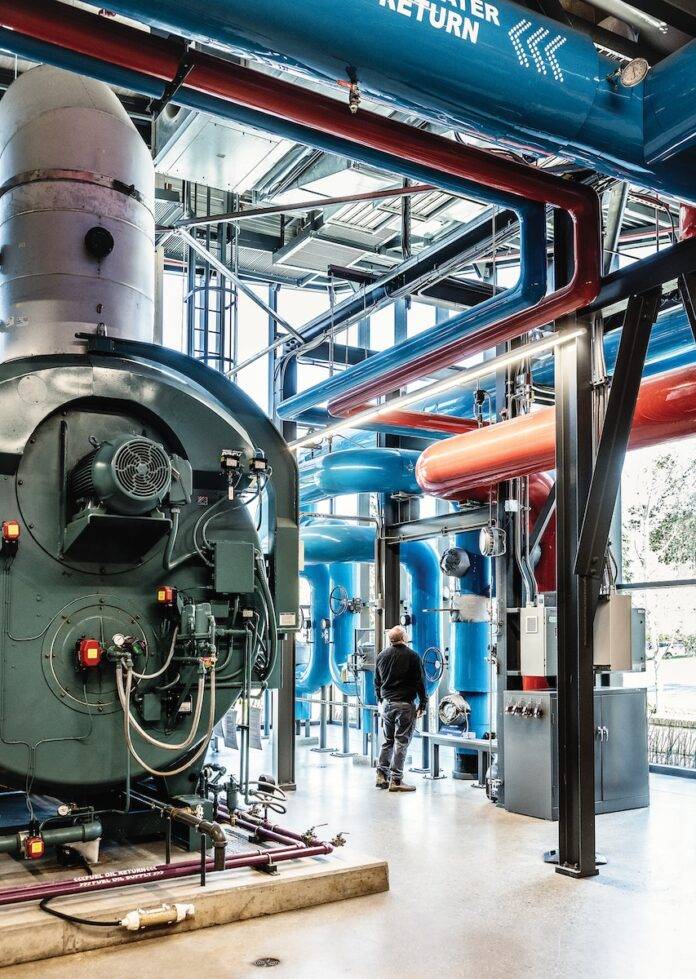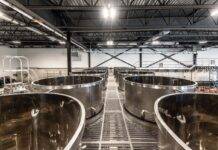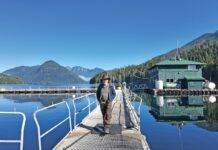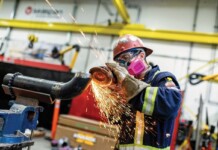
It’s the picturesque plant that powers a university campus. And now, only six years after its completion, it’s getting a significant upgrade. The University of Victoria’s District Energy Plant and its three natural gas boilers with a capacity of 27.5 megawatts supply power to about 80 per cent of the buildings sprawled across the 163-hectare campus. The output of those boilers, housed in a stunning 7,642-square-foot building with a pitched roof and tall, public-facing glass windows, will soon be replaced by two new electric boilers (capacity 4.2 MW) to help fulfil UVic’s three-year-old climate and sustainability action plan.
Call it an addition to the family. “What those electric boilers will do is take up the majority of our space heating and domestic hot water demand, thus drastically reducing our GHG’s from operations as a result,” says Mike Wilson, the university’s director of campus planning and sustainability. “We expect that to drastically reduce our greenhouse-gas-emissions profile by about 5,200 tonnes per year, so that’s equivalent to removing about 1,200 gas-powered vehicles from the road each year.”
The existing natural gas boilers will be left in place, but only fired up to supplement power when urgently needed, for instance in the event of “a cold snap like we had a couple of years ago, those peak winter months where we might have a period of -10°C or below.” The $10-million-plus project, now in the final design stages, gets going this summer and will take about a year and a half to complete with over 100 people involved. They will build an addition on the back of the building to accommodate the new boilers.
This marks the most significant change to what’s become an iconic-looking structure since its completion in 2019, when it replaced the three different boiler plants that had reached their expiry dates. The consolidated plant’s boilers feed heat through a network of hot-water pipes to dozens of buildings across campus, and do it rather publicly — the building’s windows let the public look into the plant’s workings. “What the intent of the design is to do is to make the technology and the function of the building visually accessible to the community, so you can actually see what the purpose of the building is, and there’s that visual connection to the outside,” says Wilson. “There was a strong feeling that people should know where their energy comes from.”























